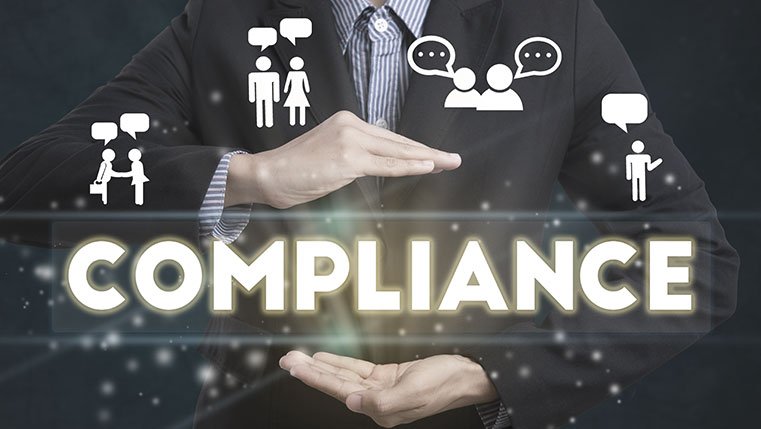Compliance, or compliance (in English), in general, means acceptance of rules, specifications and regulations. Compliance training tends to be mandatory in many organizations.
It refers to the process of training employees regarding the laws, regulations and company policies that apply to their professional responsibilities and the organization for which they work [ 1 ].
There are two main types of compliance training: corporate and regulatory compliance . Corporate compliance encompasses industry policies and procedures and all applicable local and federal laws. Regulatory compliance is about the efforts made by an organization to comply with these rules and regulations. These laws and policies may vary by industry and location.
What Are The Goals Of Compliance Training?
Compliance training seeks to reduce risks and ensure that the company and its stakeholders follow a set of rules that apply to them. Compliance training objectives include:
Ensure all employees follow company rules. If all the rules are followed, there will be fewer mistakes, fewer accidents and the quality of the company’s products and services can be guaranteed.
Ensure that all employees and the company itself follow government rules. Following the local and federal laws that apply to an organization avoids the fines and penalties that can be imposed for breaking the law.
Maintain a good working environment for employees and stakeholders. Compliance training helps educate employees and can prevent ethical issues, harassment and accidents. This results in a better working environment for employees overall and a lower turnover rate.
Maintain a company’s reputation and avoid monetary losses. Compliance training makes employees and stakeholders accountable in the event of irregularities or malpractice based on compliance training records. The company can prevent errors and penalties, in addition to being able to distance itself from problematic stakeholders.
Compliance Training Examples
Compliance training can cover many topics . Here are some examples:
Harassment. This type of training shows you how to identify harassment and what to do if you are a victim or witness to such behavior in the company. It can ensure that the work environment is safe for everyone and serves as an alert to potential harassers.
Safety. Focused on the company’s guidelines on the use of safety equipment and on the correct execution of certain tasks, avoiding accidents.
Virtual security. It explains what it is and how each employee can prevent cyber attacks on company computers and servers.
Ethic. This type of training explains the company’s values and how each employee must respect them. It covers what is considered ethical behavior and what is not.
Corruption and money laundering. It explains how the company handles its finances, what is the proper behavior with the company’s money, and what is not. It teaches the employee to recognize corruption schemes in the company and report them reliably, in addition to the penalties for participating in such schemes (including prison terms).Government Rules. This type of training is related to any industry laws and regulations that a company must follow and how each employee is responsible for following the rules related to their job.
How does compliance training differ from other types of training?
Compliance training might sound like just another kind of mandatory training. But it isn’t. Compliance training seeks to ensure that the rules applicable to the company are followed and risks are reduced.
Other types of training are more focused on employee development, for example:
The integration training ( onboarding ) is focused on training new employees so that they feel welcome in the company. It’s about teaching them the company’s culture and values and what is expected of them in the first few weeks of work.
Regular skills training continually trains employees to improve their skills and knowledge to perform better in their work. Coaching is a type of training that aims to help an employee achieve their potential in the company, or as a leader, or in helping the company achieve its goals.
Compliance training doesn’t have to be tedious
Compliance training doesn’t have to be tedious. It all depends on how you organize your training and create the material [ 2 ]! With Easy LMS, you have access to the following tools to make your training material more interesting:
Courses that combine text, video, images and audio that make your training engaging and fun, with real examples and varied content.
Tests with different types of questions (including video and audio) so you can illustrate your points more clearly and cater to different types of learners .
Certification with custom certificates that include a unique code that can be verified directly with Easy LMS and also with third-party tools. For example, Merits or Credly are both currently used by our customers through integrations to compliance training records.
Ease of access from different devices (including mobile) so your employees can take training when it’s most convenient for them.
Reports that can be stored offline, just download them and store them in company records for an audit, for example.

Academy with a learning trail that allows employees to access multiple courses in one place, check their progress, and download certificates.
Custom branding so you don’t have to tell anyone you’re using Easy LMS for your compliance training and keep all the credit for yourself!
Want to know how our customers use Easy LMS for compliance training? Read how the District Council of Southland, New Zealand created a series of fun courses for their employees with Easy LMS, which resulted in a much higher completion rate.
